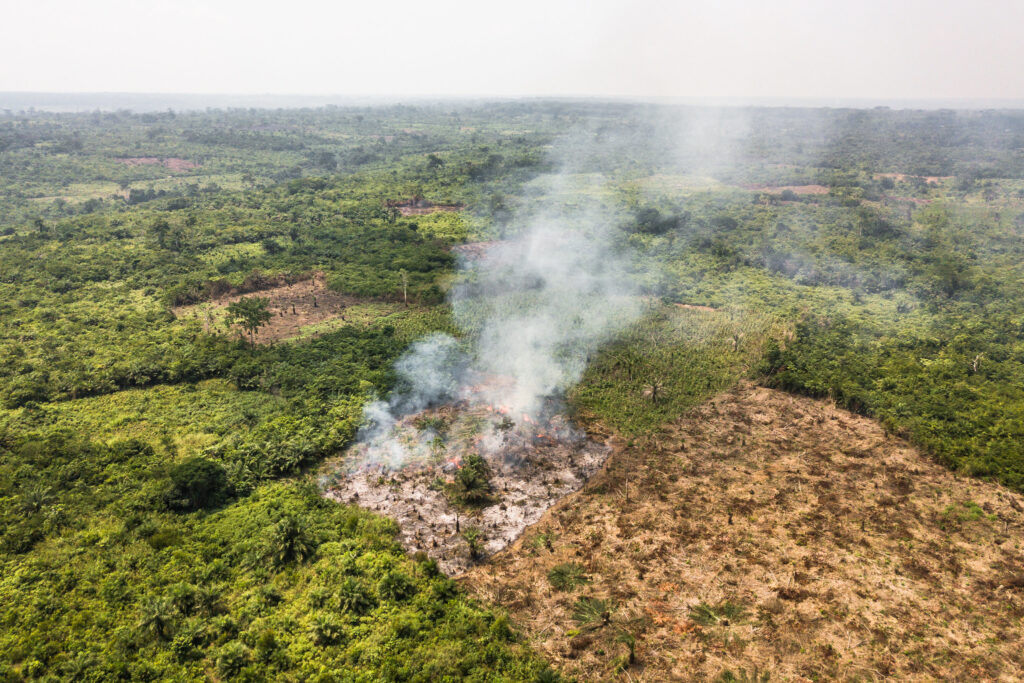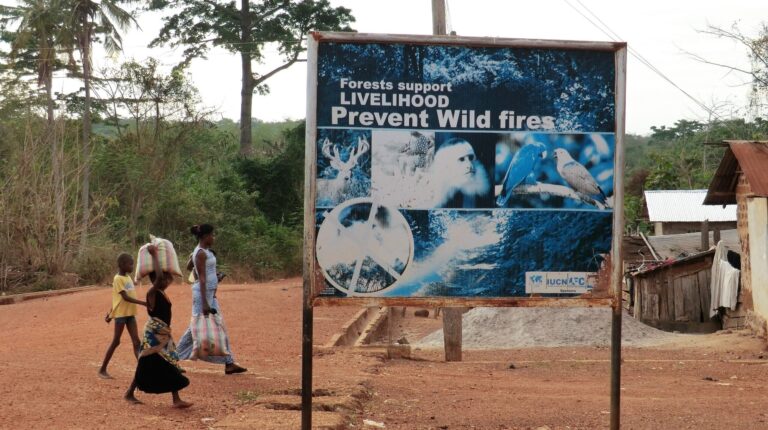A new Geophysical Research Letters study has found that fires in Africa’s wet, tropical forests have doubled in recent decades.
The American Geophysical Union study presents the first large-scale analysis of fire patterns in West and Central Africa’s wet, tropical forests. According to the report, the number of active fires there typically doubled over 18 years, particularly in the Congo Basin. The increases are primarily due to increasingly hot, dry conditions and the impact of humans on the forests, including deforestation. The increase in forest fires is likely to continue given current climate projections, the study found.
With fires increasing in other historically wet forests, such as the US Pacific Northwest and the Amazon, wet forest fires can no longer be ignored, the researchers stated.
Scientists have known for decades that wet forests in western and central Africa have fires but because the fires tend to be much smaller than their counterparts in dry woodlands and savannas, relatively little research has been done on Africa’s tropical forest fires. This has led to uncertainty over where and when they burn, what exacerbates them and how that might shift in response to climate change.
“Historically, scientists have not considered fire to be an important part of wet, tropical forests, but there’s been work in the Amazon in recent decades that has suggested otherwise,” said Michael Wimberly, an ecologist at the University of Oklahoma, who led the study. “We need to start thinking about wet forests as being susceptible to fires and considering fire an important impact of climate change in tropical forests.”
Drier forests, frequent fires
Previous research on fires in wet, tropical African forests typically focused on relatively small areas or used data sets that were not representative of the whole forest system. Wimberly’s new study is the first comprehensive assessment of fire patterns in wet African forests, which are mostly ignited by humans.

The researchers used satellite imagery to track active fires from 2003 to 2021 in Western and Central Africa, including the Congo Basin. The researchers reportedly found an unambiguous increase in fire frequency over time. The greatest increases were in the Northwest Congolian Lowland Forests, where there were 400 more active fires per 10,000km2 (3,861m2) annually, in 2021 compared with 2003. Across most of the Congo Basin, active fire densities typically doubled over the study period.
Areas with rapid forest loss, or deforestation, also saw more fire activity. Deforestation is associated with high levels of human activity and fragments the remaining forests, increasing the length of exposed edges where most fires burn. A forest’s edge has a drier microclimate and more invasive species than interior forests, making it more susceptible to fire.
The researchers also compared fire occurrences to weather patterns and found clear associations between fires, high temperatures and vapor pressure deficit, which is an indicator of plant water stress. They found a particularly strong relationship during the 2015-2016 ‘super El Niño’, which brought anomalous heat and drought conditions to tropical Africa.
“I was surprised at how strong and clear the climate signal was,” Wimberly said.
The findings provide critical insights into how climate change could influence African forest fire activity, particularly during El Niño years, and highlight the need to control fires at forests’ edges to prevent harmful feedback loops: a fire-affected forest is more likely to have less canopy cover and more fragmentation, increasing its fire risk.
“Tropical forest fires have been long overlooked but they’re only going to become more important in the future,” Wimberly said. “We can’t ignore them any longer.”
In related news, starting this spring, the Finnish Meteorological Institute (FMI) will no longer issue separate grass and forest fire warnings but will replace them with a wildfire warning. The new term is defined in the revised Rescue Act, which entered into force at the beginning of 2024. Click here to read the full story.



